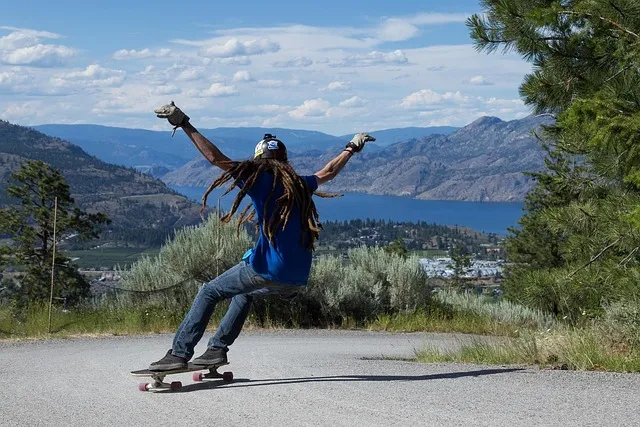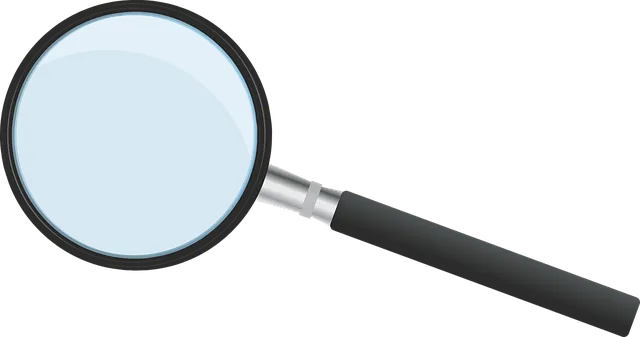Choosing the right longboard as a beginner is crucial for an enjoyable first experience. Opt for a board with versatility, balance, and forgiveness, featuring moderate flex decks, standard shapes, and soft wheels. Focus on mastering foundational skills like pushing, turning, and braking in controlled settings. Practice balancing, weight shifting, and carving turns to enhance your cruising experience. Navigate different terrains gradually, starting with smooth roads and progressing to uneven surfaces. Maintain your longboard properly by cleaning, waxing, and storing it appropriately. Prioritize safety with a helmet, proper techniques, and reflective gear. Build confidence through learning fundamental skills and challenging yourself progressively.
“Embarking on your first longboarding adventure? This comprehensive guide ensures a smooth cruising experience. From choosing the ideal longboard for your needs to mastering advanced techniques, we’ve got you covered. Learn the basics, discover effective navigation strategies, and explore essential safety measures. Additionally, find out how to maintain your board, build confidence, and transition from beginner to intermediate levels with ease. Optimise your longboarding journey with our expert tips tailored specifically for first-time riders.”
Choosing the Right Longboard for Your First Experience

When embarking on your first longboarding experience, selecting the ideal board is a pivotal step to ensure a smooth and enjoyable journey. For newcomers, opting for a longboard designed specifically for beginners offers several advantages. These boards are typically built with versatility in mind, providing a balanced setup that caters to various riding styles. Look for decks that offer a moderate flex, as this contributes to better control and stability, which is crucial when learning to balance and carve.
Consider the deck’s shape; a standard drop-through or pin tail design is often recommended for beginners due to its forgiving nature. These shapes allow for easier turning and a more relaxed riding position, enabling new riders to focus on mastering the fundamentals without being hindered by an unyielding board. Additionally, ensuring the longboard has soft wheels can significantly impact the overall cruising experience, providing a smoother ride over rough surfaces and allowing for easier speed control.
Understanding the Basics of Longboarding for Beginners

For those new to the world of longboarding, understanding the basics is key to a smooth cruising experience. A longboard for beginners should ideally be designed with stability and ease of control in mind. These boards typically have longer decks, softer flex patterns, and larger wheels compared to their shorter counterparts. This combination allows for easier turning, better absorption of bumps, and increased balance, making it perfect for those just starting out.
Beginners should focus on learning fundamental skills like pushing, turning, and braking. Practicing these techniques in a controlled environment, such as an empty parking lot or a smooth path, can help build confidence and muscle memory. With time and practice, transitioning to more advanced tricks and maneuvers becomes smoother, allowing you to fully enjoy the cruising experience that longboarding offers.
Techniques for a Smooth and Balanced Ride

For a smooth cruising experience on a longboard for beginners, mastering balance is key. Begin by adopting a comfortable, upright posture with your feet placed naturally on the deck. Keep your eyes ahead, not down at your feet, to maintain proper body alignment. Practice gliding and carving gentle turns to get a feel for how the board responds to your movements. Focus on smooth, controlled motions rather than abrupt jerks.
As you gain confidence, incorporate techniques like weight shifting to fine-tune your balance. Shift your weight from side to side while cruising to initiate turns smoothly. Additionally, learn to use your legs and feet as a counterbalance during more advanced maneuvers. Remember, patience is paramount. Consistent practice will help you develop the muscle memory needed for effortless, balanced riding on your longboard for beginners.
How to Navigate Different Terrains Effectively

Navigating different terrains is an essential skill for any longboarder, especially beginners looking to smoothen their cruising experience. The key lies in understanding and adapting to various surfaces. Smooth, flat roads are ideal for beginners to start on, as they allow for easy control and practice of basic maneuvers. As you gain confidence, venturing onto slightly rougher terrain, like gently curved paths or paved bike lanes with occasional bumps, will help improve your balance and handling skills.
For more challenging rides, learning to navigate uneven surfaces, such as gravel paths or wooden boardwalks, is crucial. These terrains require a different approach in terms of speed control and weight distribution. Using the right amount of pressure on your longboard’s trucks and practicing smooth turns will make these transitions smoother. Always be mindful of potential hazards like rocks, roots, or cracks, and adjust your speed accordingly to ensure a safe and enjoyable cruising experience.
Tips for Maintaining Your Longboard and Extending Its Lifespan

A smooth cruising experience with your longboard for beginners starts with proper care and maintenance. Regular cleaning is key to preserving its aesthetics and performance. Use a soft cloth or brush to remove dirt, salt, or grit that can damage the board’s surface. Avoid harsh chemicals and excessive water, as these can warp or deteriorate the materials, especially if you’re cruising in wet conditions.
Additionally, keeping your longboard well-lubricated is crucial for smooth turns and preventing stickiness. Apply a small amount of high-quality wax to the wheels periodically, focusing on areas where friction is most concentrated. Always store your board in a dry place, avoiding direct sunlight or extreme temperatures that can cause warping or fading. Proper maintenance not only extends the lifespan of your longboard for beginners but also ensures each ride remains as enjoyable and seamless as the first.
Essential Safety Measures Every Newbie Should Know

When stepping into the world of longboarding, safety should always be your top priority. As a beginner, it’s crucial to understand and implement essential safety measures right from the start. First and foremost, invest in a high-quality helmet designed specifically for longboarding. This simple act can significantly reduce the risk of severe head injuries during falls or crashes. Remember, even experienced riders can encounter unexpected obstacles, so staying protected is vital.
Additionally, learn and practice proper riding techniques, such as maintaining balance, controlling speed, and making safe stops. Many beginner-friendly longboards come with reflective features for enhanced visibility during night rides. Always be mindful of your surroundings, especially in traffic-prone areas. Learning to read the road and anticipate potential hazards will not only keep you safe but also improve your overall cruising experience.
Building Confidence: Advancing from Beginner to Intermediate Level

For those new to the world of longboarding, building confidence is a crucial step in achieving a smooth cruising experience. Starting with a longboard for beginners allows you to learn the basics and gain a solid understanding of balancing, carving, and controlling your speed. As you become more comfortable on the board, gradually challenge yourself to transition from beginner to intermediate skills.
Practice in open spaces, focusing on improving your stance, turning techniques, and ability to maintain control at different speeds. With dedicated training and a gradual increase in difficulty, you’ll develop the necessary confidence to navigate various terrains and enjoy the freedom that comes with mastering a longboard for beginners.
